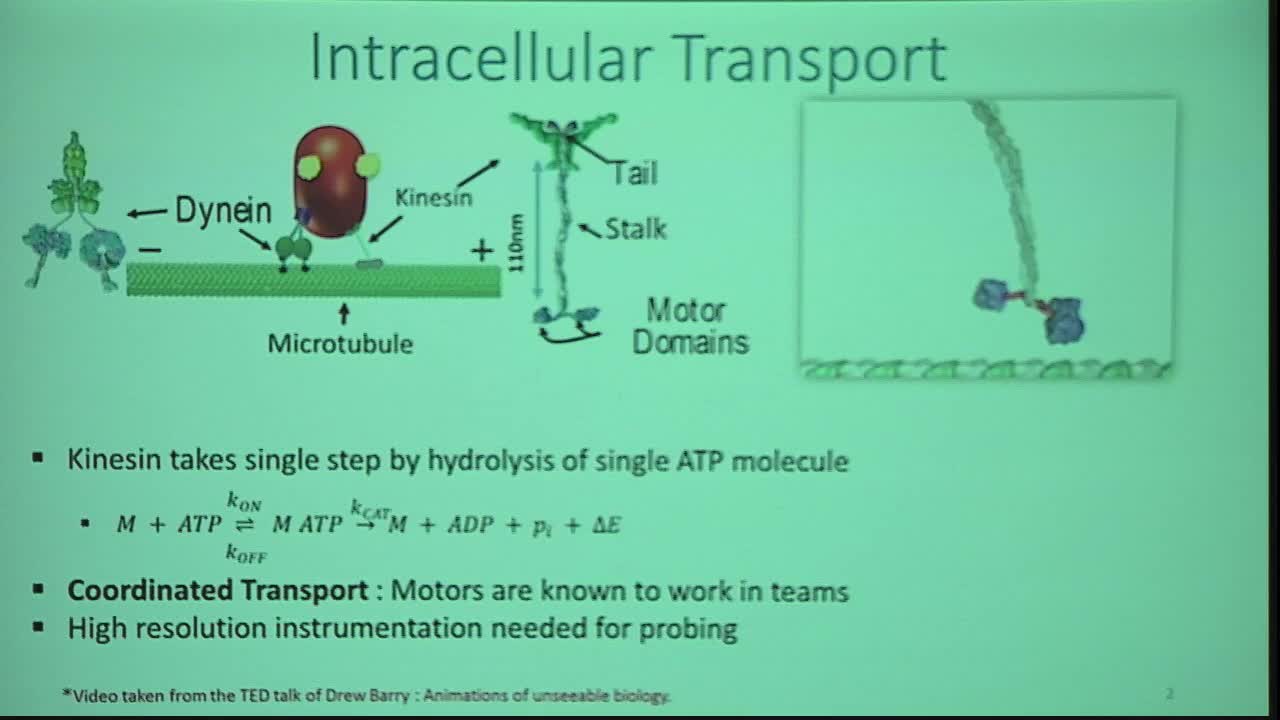Study of Emergent Transport Properties of Molecular Motor Ensemble Using Novel Computational Approach
Presenter
November 20, 2015
Keywords:
- proteins
MSC:
- 92D20
Abstract
Motor proteins, such as kinesins and dyneins, are responsible for several fundamental transport functions inside the cell. Disruptions of these underlying mechanisms are linked to many neurodegenerative diseases such as Alzheimer’s, Paraplegia and Amyotrophic Lateral Sclerosis (ALS). Impaired functionality of motor proteins, possibly caused due to mutations, have been linked to disruptions in intracellular transport. In vitro experiments have helped understand how a single motor performs its functions; however, it is known in vivo that multiple motor-proteins, possibly of different types, are involved in the transportation of a single cargo. What is of particular significance is the study of transport of cargo when it is mediated by motor proteins that are both wild-type as well as affected by mutations. The resolution demands on the probing instrumentation are considerably more stringent when multiple motors are engaged in transport. Furthermore, an exhaustive experimental study of a specific mutation can be prohibitively time consuming where numerous ratios of the number of wild-type to mutant motor-proteins have to be considered. Thus, there is a significant need for analytical/computational methods to inform experimental studies.
To address this issue we develop a semi-analytical method to compute the time evolution of the probability of relative configurations of wild-type and mutant motor-proteins as they transport a common cargo on a microtubule. In this way we determine the effect of mutations on biologically relevant quantities such as runlength and average velocity when a cargo is carried by both mutant and wild-type motor proteins. The method offers several advantages over existing Monte Carlo based methods in terms of exactness of results, computational resources needed and abilities to investigate rare events. The instantiatiation of this method for a recently reported mutation has enabled us to arrive at several hitherto unreported conclusions. Primarily, it is speculated that under appropriate load forces on the cargo, the mutant characteristics affect the cargo runlength even when the wild-type motors outnumber the mutant motors. This can have several implications towards studying the effect of mutations on coordinated transport as well as understanding which single motor characteristics lead to impaired cargo transport. Furthermore, the methodology can be extended to study the effect of any single motor mutations as well as to study cargo transport by multiple species of molecular motors.
